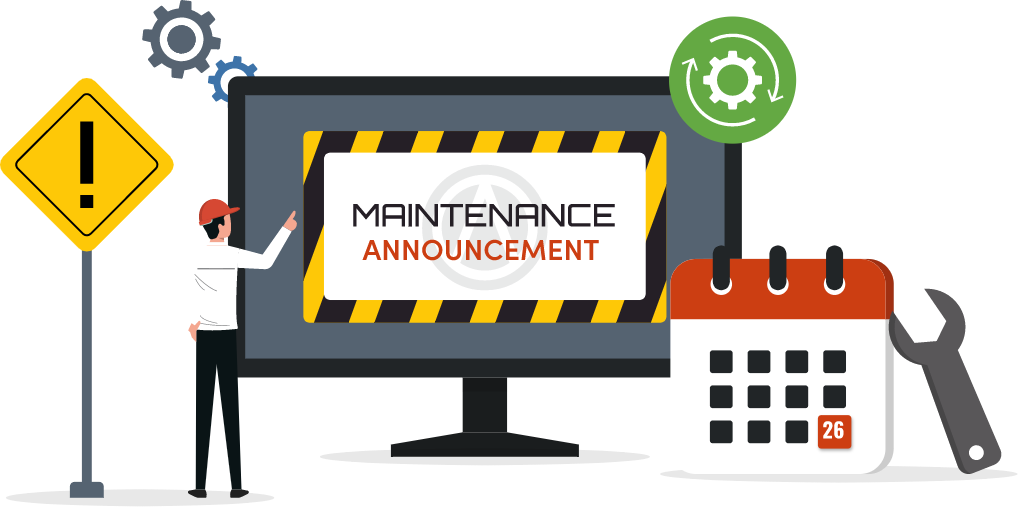What is a corrective action plan (CAP)?
A CAP is a structured plan outlining the steps needed to address the root cause of an incident, assign responsibility, set deadlines, and verify results.
Risk Management Process Made Simple for QSRs
Overview
Quick service restaurants (QSRs) thrive on speed, consistency, and convenience - but behind the fast-moving operations, risks are everywhere. From slippery floors and hot fryers to improper food handling or faulty equipment, a single oversight can lead to injuries, food-borne illness, or costly disruptions. For owners and managers, the challenge isn't just dealing with these incidents when they happen. It's about having a structured process that helps you prevent problems, respond effectively, and document everything correctly for compliance and liability protection.
The reality is stark - restaurant workers are twice as likely as employees in other industries to suffer burns, cuts, or slips on the job, and food-borne outbreaks linked to restaurants continue to account for a large share of reported cases in the U.S. Beyond the human impact, each incident can result in fines, lawsuits, insurance claims, and damage to your reputation.
Yet, risk management doesn't need to be overwhelming. When broken down into clear, practical steps, it becomes a manageable part of daily operations. By adopting a straightforward risk management process, QSR owners can create safer environments, protect their teams, reassure customers, and safeguard profitability - all while staying compliant with health and safety regulations.
Understanding the Risk Management Process

Risk management may sound like something reserved for large corporations, but in reality, it's just as critical - if not more so - for quick service restaurants. At its core, the risk management process is a structured way to identify potential hazards, evaluate how serious they are, decide on controls, document what happens, and then continuously review results. For QSR owners and managers, this means turning everyday challenges - like hot oil, sharp knives, or food handling errors - into manageable, trackable processes that reduce the chance of harm.
The process typically follows five stages -
1. Identify risks - spotting hazards before they become incidents.
2. Assess risks - ranking them by severity and likelihood.
3. Control risks - putting safety measures in place.
4. Monitor - ensuring controls are followed and effective.
5. Review - learning from incidents and improving procedures.
This structured approach isn't just theoretical. Data from OSHA shows that slips, trips, and falls make up nearly 25% of workplace injury claims in food-service, while the CDC links most food-borne outbreaks to poor handling practices. A clear process helps ensure these risks don't fall through the cracks.
When you apply this framework consistently, your restaurant benefits in three key ways - fewer injuries and illnesses, better compliance with health and safety regulations, and stronger trust from both staff and customers. Instead of reacting to emergencies, you'll have a system that turns incidents into opportunities for long-term improvement.
Elevate Food Safety, Simplify Compliance!
Experience Seamless Food Safety with Altametrics!
Step 1. Identify Risks in Your Restaurant
The first step in any effective risk management process is identifying the risks that exist in your restaurant. In a QSR environment, hazards can come from multiple directions - fast-paced operations, high staff turnover, and constant pressure to serve food quickly all increase the likelihood of accidents or mistakes. By systematically scanning your operation, you can pinpoint risks before they escalate into costly incidents.
Some of the most common risks for QSRs include -
1. Slips, trips, and falls from wet floors, grease buildup, or cluttered walkways.
2. Burns and cuts from hot oil, grills, fryers, knives, and slicers.
3. Foodborne illness caused by improper cooking, cross-contamination, or poor storage.
4. Equipment hazards like malfunctioning fryers, refrigeration failures, or electrical issues.
5. Customer-related risks such as allergic reactions, choking, or slips in the dining area.
To make this process practical, owners and managers should conduct daily walkthroughs and weekly inspections of high-risk areas. A structured checklist keeps the review consistent and ensures nothing is overlooked.
Sample Risk Identification Checklist -
1. Floors free of spills, grease, and obstructions
2. Proper PPE (gloves, aprons, non-slip shoes) available and in use
3. Cooking and refrigeration equipment functioning properly
4. Food stored at safe temperatures
5. Clear signage for hot surfaces and wet floors
6. Emergency exits clear and accessible
By embedding this routine into daily operations, you not only reduce immediate risks but also create a culture of awareness where employees are more likely to notice and report hazards on their own. Early identification is the foundation that makes every other step in the risk management process more effective.
Step 2. Assess and Prioritize Risks
Once risks are identified, the next step is to assess their impact and likelihood. Not all hazards carry the same weight. For example, a loose floor mat at the entrance could cause a slip-and-fall - a serious liability - while a minor delivery delay may cause inconvenience but won't put customers or staff at risk. By assessing and prioritizing, QSR owners can focus resources on the issues that matter most.
The most effective way to do this is by using a risk matrix. A risk matrix helps categorize each hazard based on -
1. Likelihood (How often could this happen? Rare, occasional, frequent)
2. Severity (What would the outcome be? Minor inconvenience, serious injury, major outbreak)
For example -
1. High Likelihood + High Severity = Critical risk (e.g., fryer oil splashes without protective gear).
2. Low Likelihood + High Severity = Important risk (e.g., foodborne outbreak from supplier contamination).
3. High Likelihood + Low Severity = Moderate risk (e.g., minor cuts in prep).
4. Low Likelihood + Low Severity = Low risk (e.g., occasional late supplier truck).
By mapping hazards in this way, managers can clearly see where to direct corrective actions and training efforts. This data-driven approach ensures that urgent, high-risk issues are addressed first, preventing wasted time on low-impact problems. Over time, a consistent risk assessment process helps create safer operations and reduces the chances of costly incidents.
Step 3. Record Incidents Clearly and Consistently

Even with strong prevention efforts, incidents will still occur. What matters most is how they are documented. In a QSR setting, speed is everything - and that often means managers are tempted to handle a situation quickly and move on. However, failing to record incidents thoroughly can create major problems later, from compliance violations to disputes with employees, customers, or regulators. Clear, consistent documentation ensures transparency, protects the business legally, and provides the foundation for corrective action.
An effective incident report should answer the 5 W's + H -
- Who was involved? (employee, customer, witness)
- What happened? (specific incident, injury, or illness)
- When did it occur? (date, time, shift)
- Where did it take place? (kitchen, dining area, drive-thru)
- Why did it happen? (suspected cause)
- How was it handled? (immediate response, first aid, manager's action)
Sample Incident Report Template (Simplified) -
- Incident date and time
- Location within restaurant
- Individuals involved (employee/customer)
- Description of incident
- Immediate response taken
- Witness statements (if applicable)
- Manager's notes and next steps
Consistency is key. Every incident, no matter how small, should be recorded using the same form and stored in an accessible location. Digital tools can streamline this by allowing staff to log incidents via tablets or mobile devices, reducing paperwork and ensuring records are complete.
By building a strong reporting habit, owners and managers gain reliable data that can be analyzed for trends - repeat incidents, high-risk areas, or recurring equipment issues. This data transforms reporting from a reactive chore into a proactive tool for preventing future problems.
Stay Compliant, Elevate Your Business!
Discover Altametrics for Effortless Compliance Management
Step 4. Root Cause Analysis and Corrective Actions
Recording incidents is only the starting point. To prevent the same issues from happening again, managers need to dig deeper and uncover the root cause. Too often, QSRs stop at surface-level fixes like cleaned spill or retrained employee. While these actions may solve the immediate problem, they rarely address the underlying issue - meaning the same incident is likely to recur.
A simple method for uncovering root causes is the 5 Whys technique -
1. Why did the employee slip? Because the floor was wet.
2. Why was the floor wet? Because grease overflowed from the fryer.
3. Why did the fryer overflow? Because it wasn't maintained properly.
4. Why wasn't it maintained? Because no one was assigned responsibility.
5. Why was no one assigned? Because the maintenance schedule isn't documented.
By asking why repeatedly, managers can identify the real breakdown in process or accountability. Once the root cause is clear, the next step is implementing a corrective action plan (CAP).
Corrective Action Plan Checklist -
- Root cause identified
- Corrective measure defined (e.g., install grease guards, assign maintenance tasks)
- Person responsible assigned
- Deadline set
- Verification step (how and when results will be reviewed)
Corrective actions should be tracked until completion. A common pitfall is logging fixes but never following up, which leaves gaps in accountability. When done properly, corrective action planning creates a cycle of continuous improvement- incidents become lessons, and lessons become safer, more efficient operations.
By making root cause analysis and corrective planning standard practice, QSR owners not only reduce repeat issues but also demonstrate to regulators, insurers, and employees that safety and accountability are top priorities.
Step 5. Monitor, Review, and Improve Continuously
The final step in the risk management process is ensuring that your corrective actions actually work. Too often, restaurants fix an issue once, only to see it resurface weeks later. This happens because there is no structured follow-up. Monitoring, reviewing, and improving continuously turns risk management into an ongoing cycle rather than a one-time task.
For QSR owners and managers, this means -
- Tracking incidents over time to identify patterns.
- Reviewing corrective actions to confirm they were completed and effective.
- Revising policies or training when gaps are found.
- Communicating updates to staff so lessons are shared across the team.
A practical way to manage this is with a review log - a simple tool to document follow-ups.
Sample Review Log Template -
- Incident reference number
- Corrective action assigned
- Completion date
- Verification outcome (resolved / not resolved)
- Notes for improvement
- Reviewer's signature or initials
Monthly or quarterly reviews are ideal. This cadence ensures managers catch recurring risks, like frequent burns from a specific fryer or repeated cross-contamination in prep areas. Over time, the data highlights whether risks are truly decreasing or if new hazards are emerging.
By making reviews a regular part of operations, you not only reduce repeat incidents but also build a culture where safety and accountability are ongoing priorities. Continuous improvement protects staff, reassures customers, and demonstrates to regulators and insurers that your restaurant takes risk management seriously.
Final Thoughts
Risk management is not a one-off project - it's a habit that must become part of daily operations in every quick service restaurant. While the process may feel overwhelming at first, breaking it down into small, repeatable steps makes it manageable. Identifying risks, assessing their severity, documenting incidents, analyzing root causes, and monitoring improvements are all practices that can be built into the normal flow of work.
For owners and managers, the key is consistency. A risk management process only works when every incident is recorded, every corrective action is assigned, and every review is followed through. This requires setting expectations with staff, providing simple tools like checklists and report templates, and reinforcing the idea that reporting hazards isn't about blame - it's about protecting everyone. When employees see that managers act quickly on reports, they are more likely to participate actively, turning safety into a shared responsibility.
Ultimately, a strong risk management process does more than reduce injuries or foodborne outbreaks. It creates a culture of accountability, builds trust with customers, and protects profitability by reducing costly disruptions. By making risk management part of your daily routine, you ensure that your QSR is not just fast and efficient, but also safe, compliant, and resilient.
Must-Read Content

How to Build an Effective Incident Management Process in Your Restaurant

The Hotelier's Guide to Writing Effective Incident Reports

The Essential Incident Reporting Checklist for Restaurant Owners










